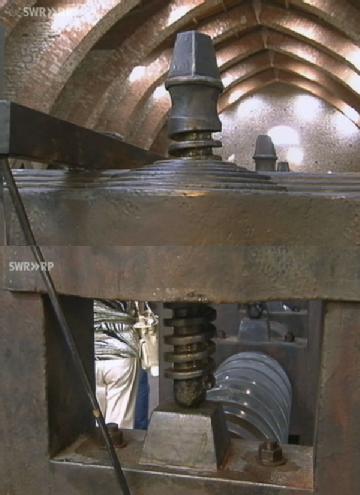| Description
|
Translated by Google from Wikipedia.es:
The building and its surroundings
Located in Sabero, Neo-Gothic building in the San Blas Ironworks, later called 'closed square. "This building, along with the remains of the blast furnace, was declared of Cultural Interest (BIC) on December 26, 1991.
In building the steel complex of San Blas was applied the most advanced technology of the moment and joined a blast furnace and foundry coke, craft workshop aimed at forging and rolling.
Strong economic and political setbacks forced the closure of this large factory after sixteen years of operation. This unexpected ending conditioned the implementation of coal mining as the only form of industrial exploitation until 1991, when it closed all the mining facilities.
Permanent exhibitions
The neo-Gothic nave of San Blas Ferrería
The Foundry building took place between 1846 and 1847, approximately, at the initiative of the "Society of Mining Palencia-Leon." The foundry, the first in Spain to use coke, hosted the first steam engines of the province and other large machinery imported from Britain: trains and rolling cylinder, hammer and shear.
The factory, which has a unique architecture of the Gothic style, is built of stone and brick, with a large central nave completely clear, without pillars, the roof supported by a succession of arches diaphragm.
The Foundry of San Blas and the remains of the blast furnace are the sole remnant of a plant in Spain's industrial era.
In recent decades there have been several initiatives aimed at rehabilitation and the forge musealization, trying to enhance and respect their values.
Sabero Valley in the past
On one side is the permanent exhibition illustrating the human presence in the valley from the Celtic settlements of the V a. C. the VI d. C. until the Middle Ages, through the Romans and Visigoths.
Blast furnaces and "San Blas Ferrería»
In the nave covers the history of the mining and steel Sabero, from the early decades of the nineteenth century, motivated by the arrival of the British in 1830 that required coal to supply their factories to the years of the Society-Leon Palencia Mine.
It tries to explain the entire process of iron coke in blast furnaces, helped by a model that represents the entire process, as well as reproductions of original machines Foundry.
Sabero coalfield
While in the valley of Sabero the steel industry collapsed, the foundry was closed in 1866, survived the mining industry until 1991. At this time there were mines as "Successive", the vertical shaft depth of 150 m "Herrera I" or "II Herrera" 512 m depth in Sotillos, which remained in effect until the final closure of the company. The emergence in 1899 of rail transport in the valley expanded production areas by installing Vegamediana laundries.
This area will display an interactive model Sabero Valley and its mining operations and another model of a mine section, analyzing a mining town from an economic standpoint, social and cultural development, focusing on technical advances. |




 museosiderurgiamineriacyl.es
museosiderurgiamineriacyl.es 




